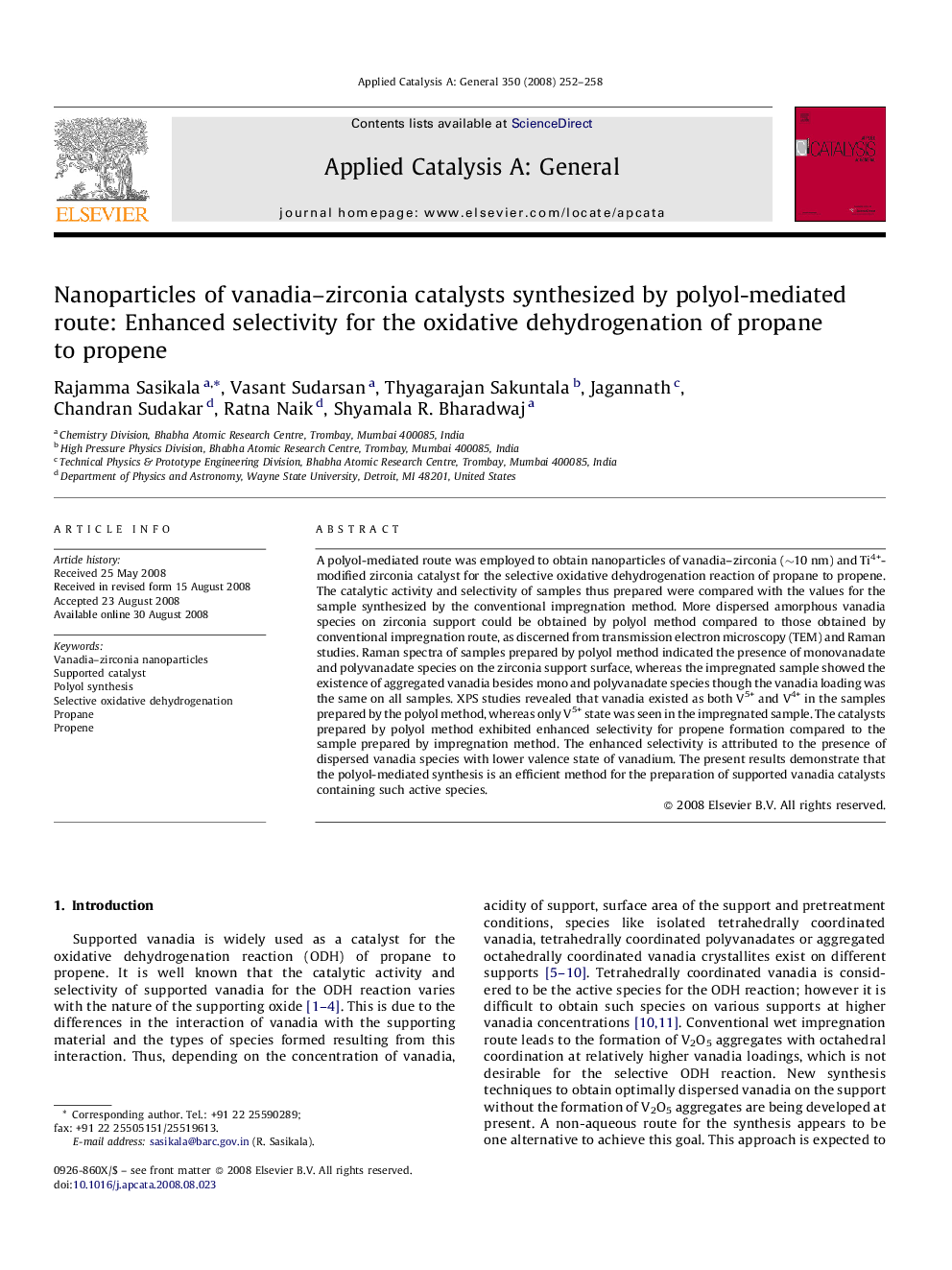| Article ID | Journal | Published Year | Pages | File Type |
|---|---|---|---|---|
| 43301 | Applied Catalysis A: General | 2008 | 7 Pages |
A polyol-mediated route was employed to obtain nanoparticles of vanadia–zirconia (∼10 nm) and Ti4+-modified zirconia catalyst for the selective oxidative dehydrogenation reaction of propane to propene. The catalytic activity and selectivity of samples thus prepared were compared with the values for the sample synthesized by the conventional impregnation method. More dispersed amorphous vanadia species on zirconia support could be obtained by polyol method compared to those obtained by conventional impregnation route, as discerned from transmission electron microscopy (TEM) and Raman studies. Raman spectra of samples prepared by polyol method indicated the presence of monovanadate and polyvanadate species on the zirconia support surface, whereas the impregnated sample showed the existence of aggregated vanadia besides mono and polyvanadate species though the vanadia loading was the same on all samples. XPS studies revealed that vanadia existed as both V5+ and V4+ in the samples prepared by the polyol method, whereas only V5+ state was seen in the impregnated sample. The catalysts prepared by polyol method exhibited enhanced selectivity for propene formation compared to the sample prepared by impregnation method. The enhanced selectivity is attributed to the presence of dispersed vanadia species with lower valence state of vanadium. The present results demonstrate that the polyol-mediated synthesis is an efficient method for the preparation of supported vanadia catalysts containing such active species.
Graphical abstractA polyol-mediated route was employed to obtain nanoparticles of vanadia–zirconia (∼10 nm) and Ti4+-modified zirconia catalyst for the selective oxidative dehydrogenation reaction of propane to propene. Highly dispersed amorphous vanadia species on zirconia support could be obtained by polyol method. The catalysts prepared by polyol method exhibited enhanced selectivity for propene formation from propane compared to the sample prepared by impregnation method. Figure optionsDownload full-size imageDownload as PowerPoint slide
